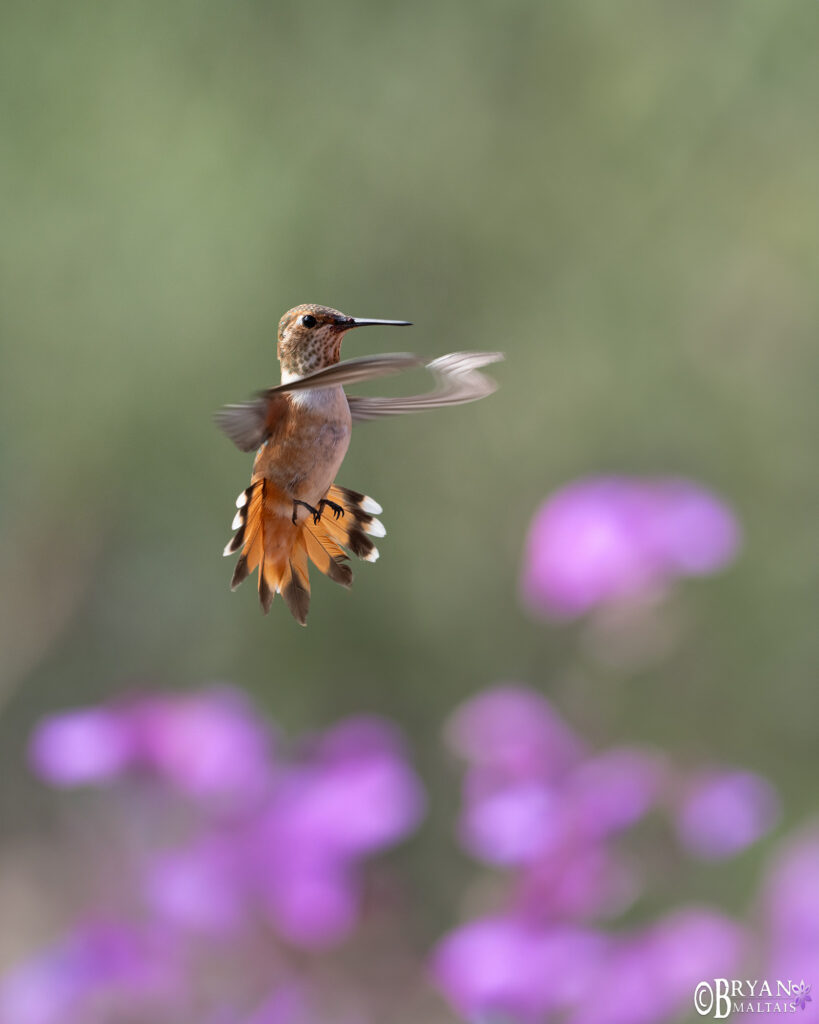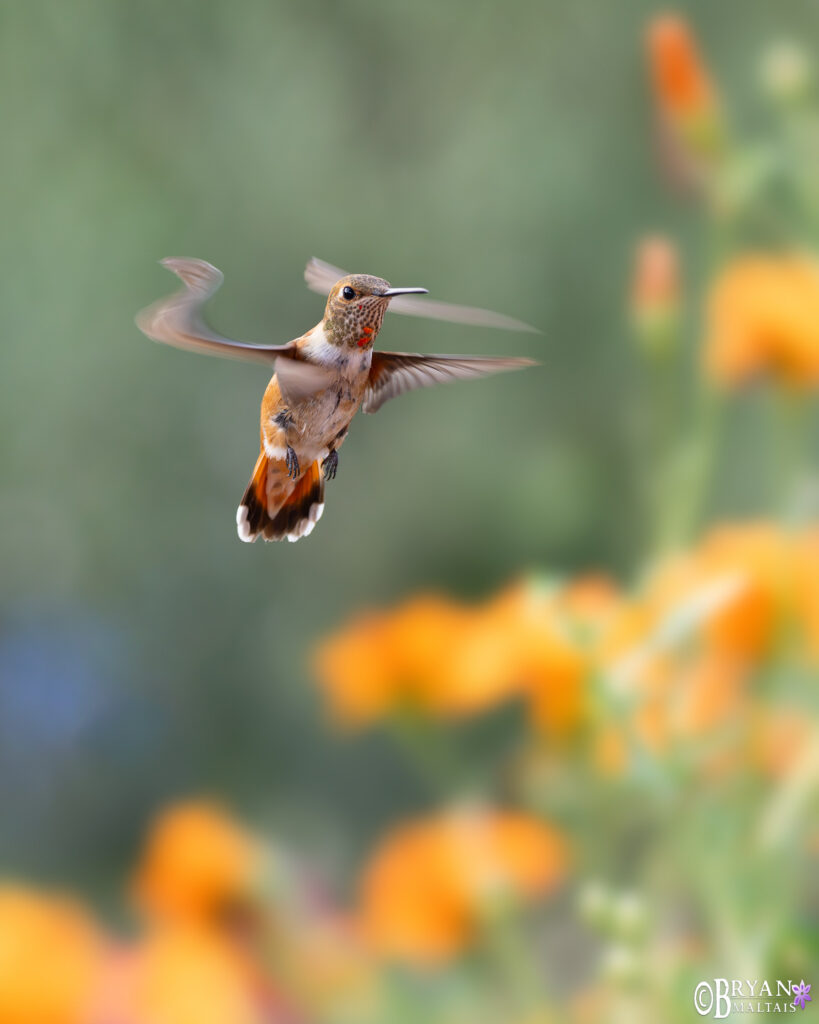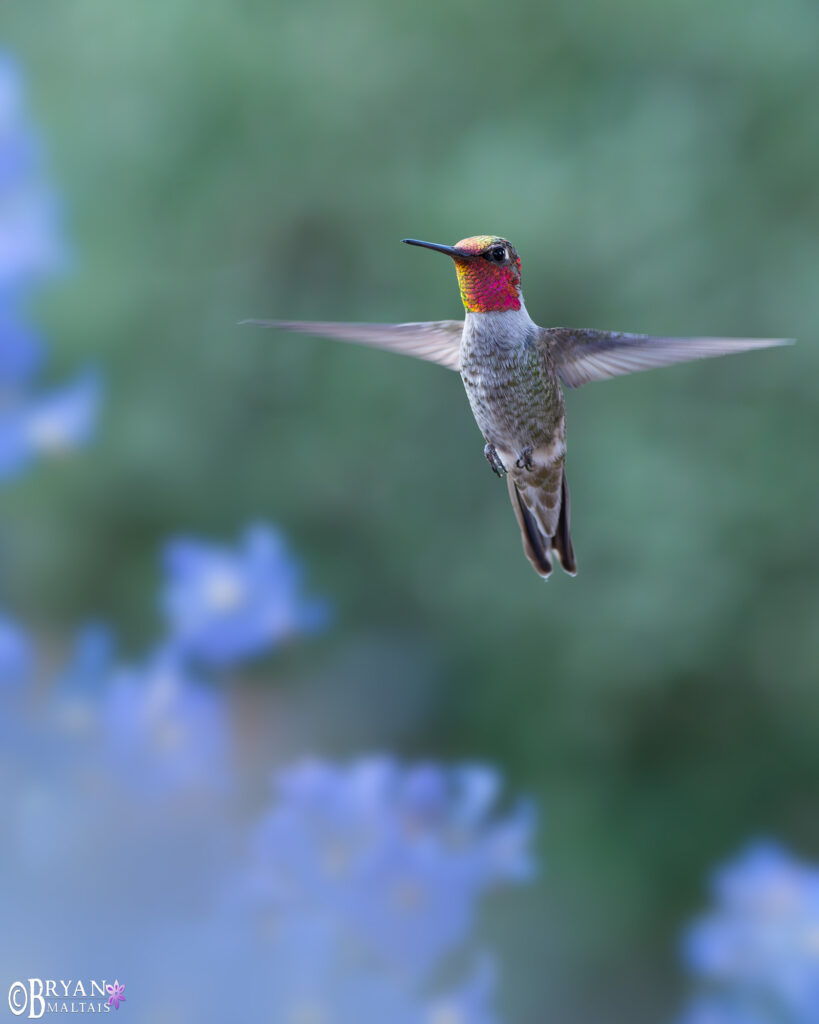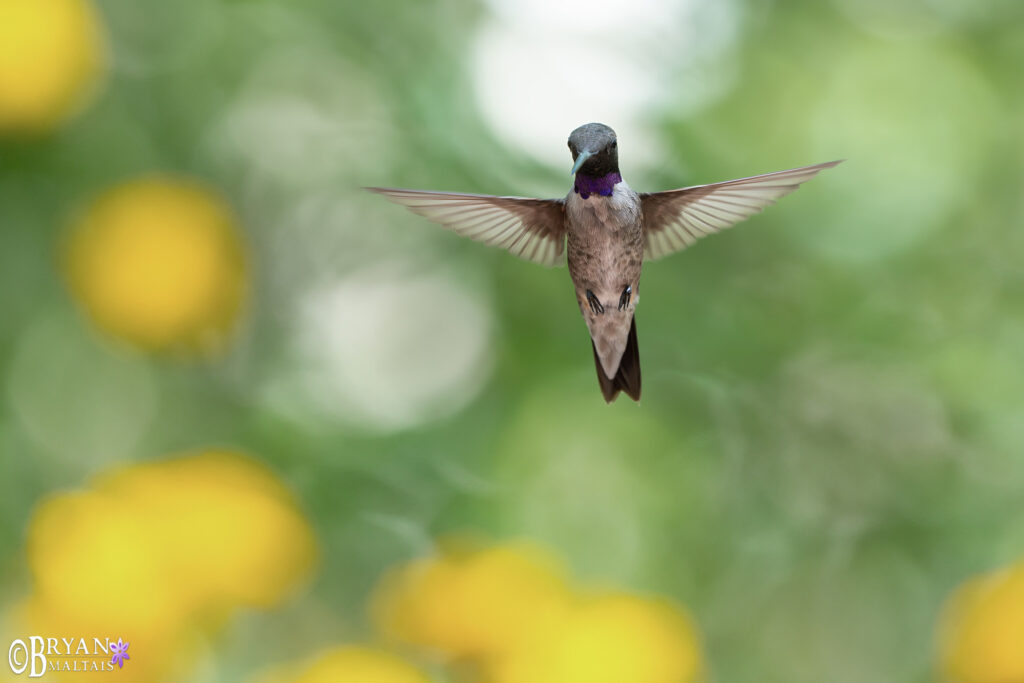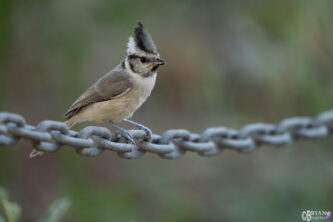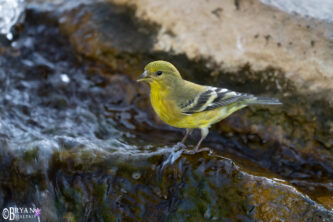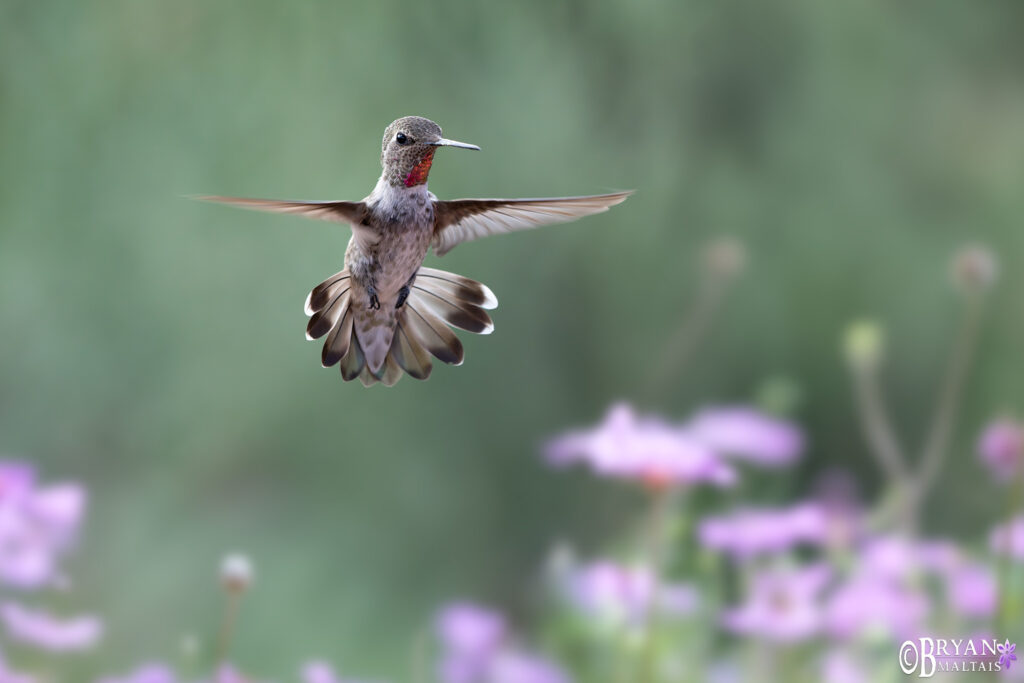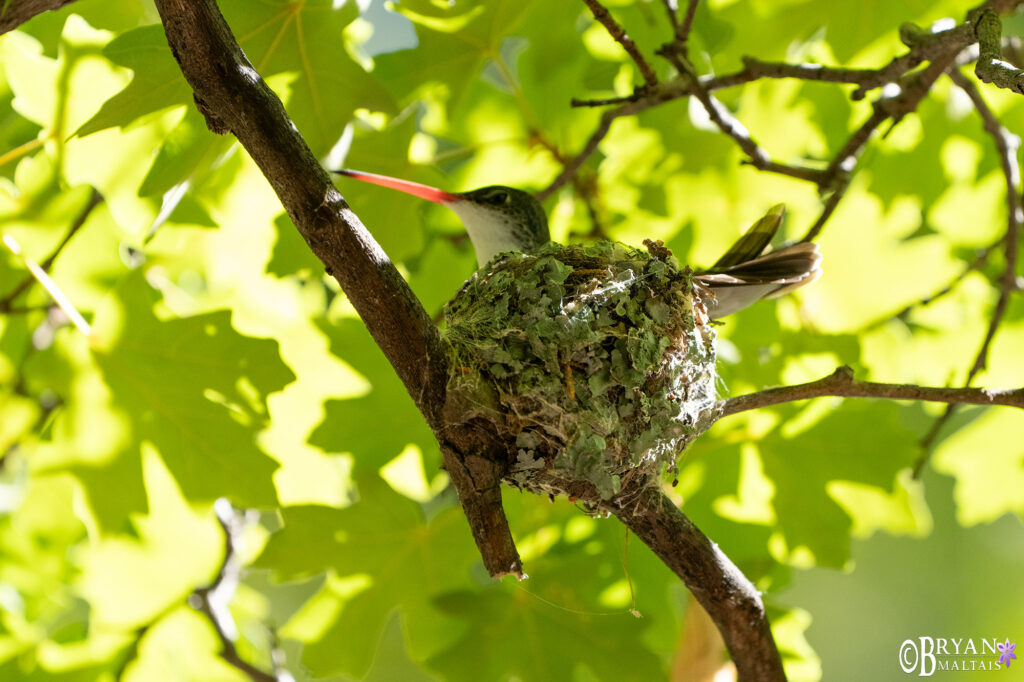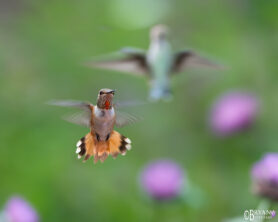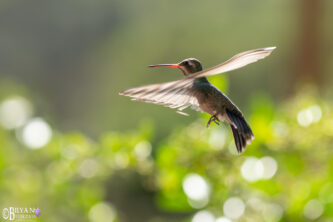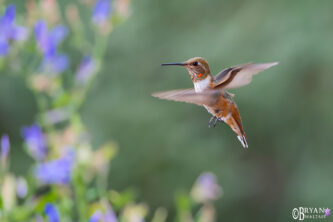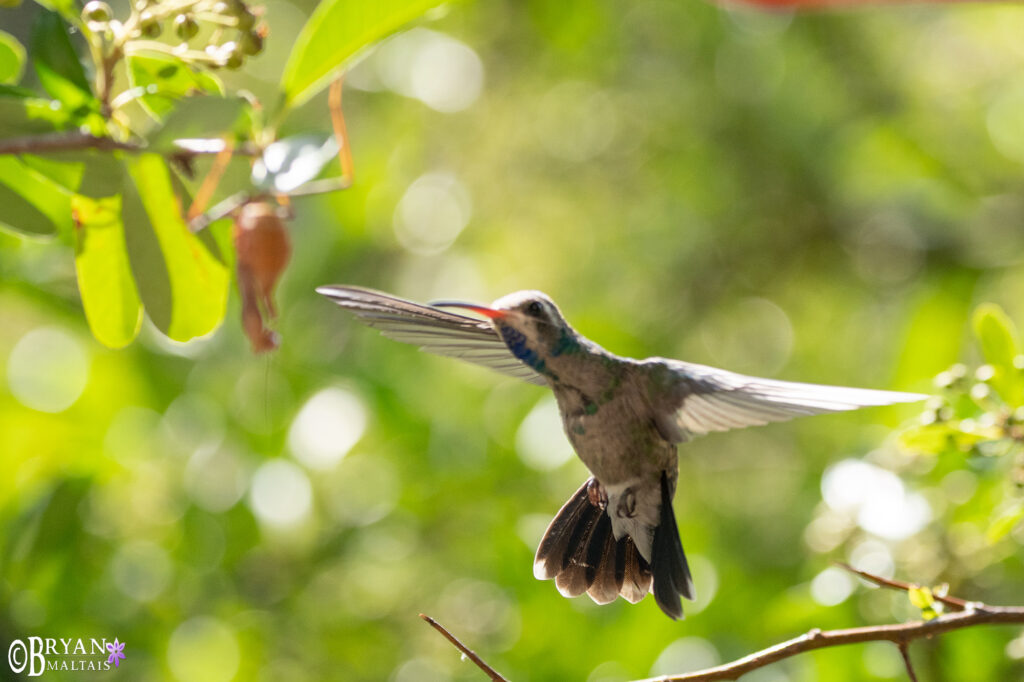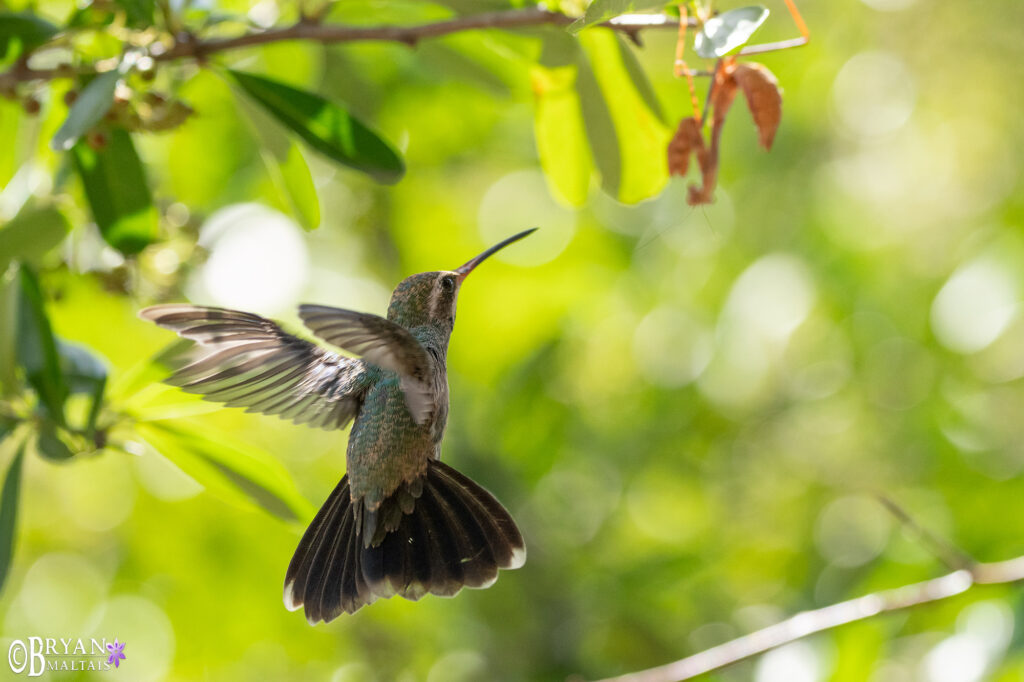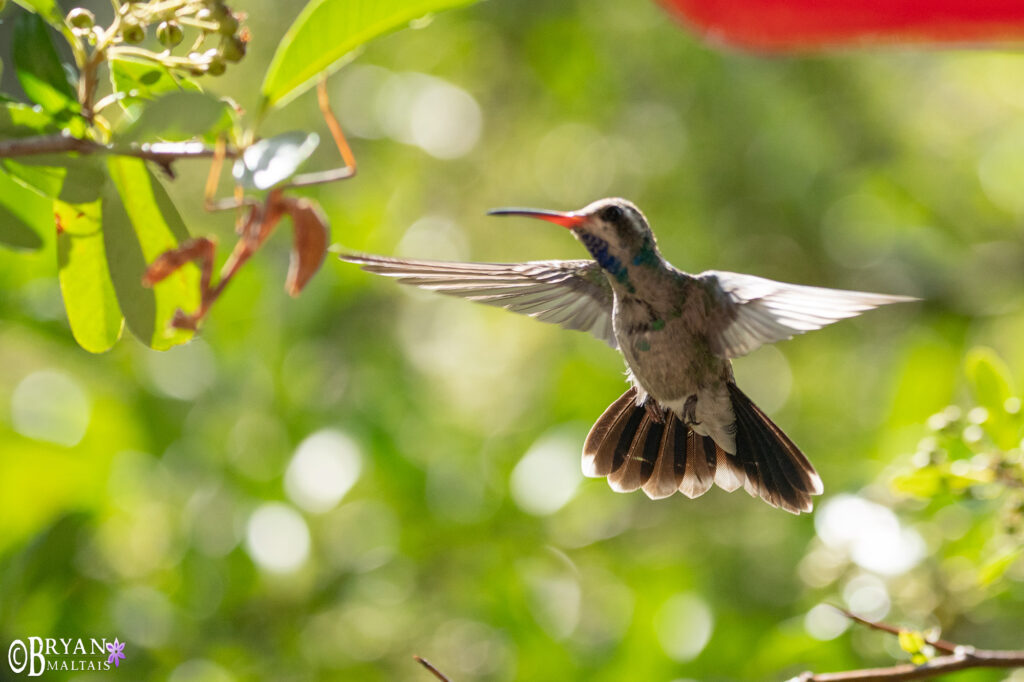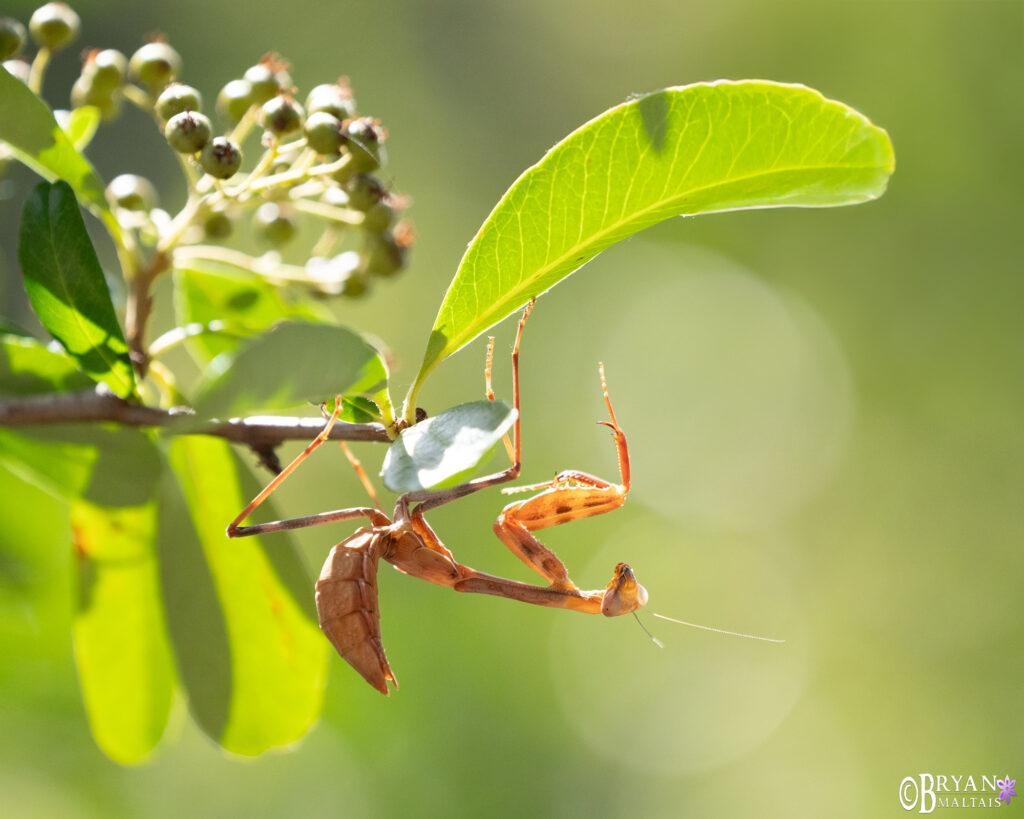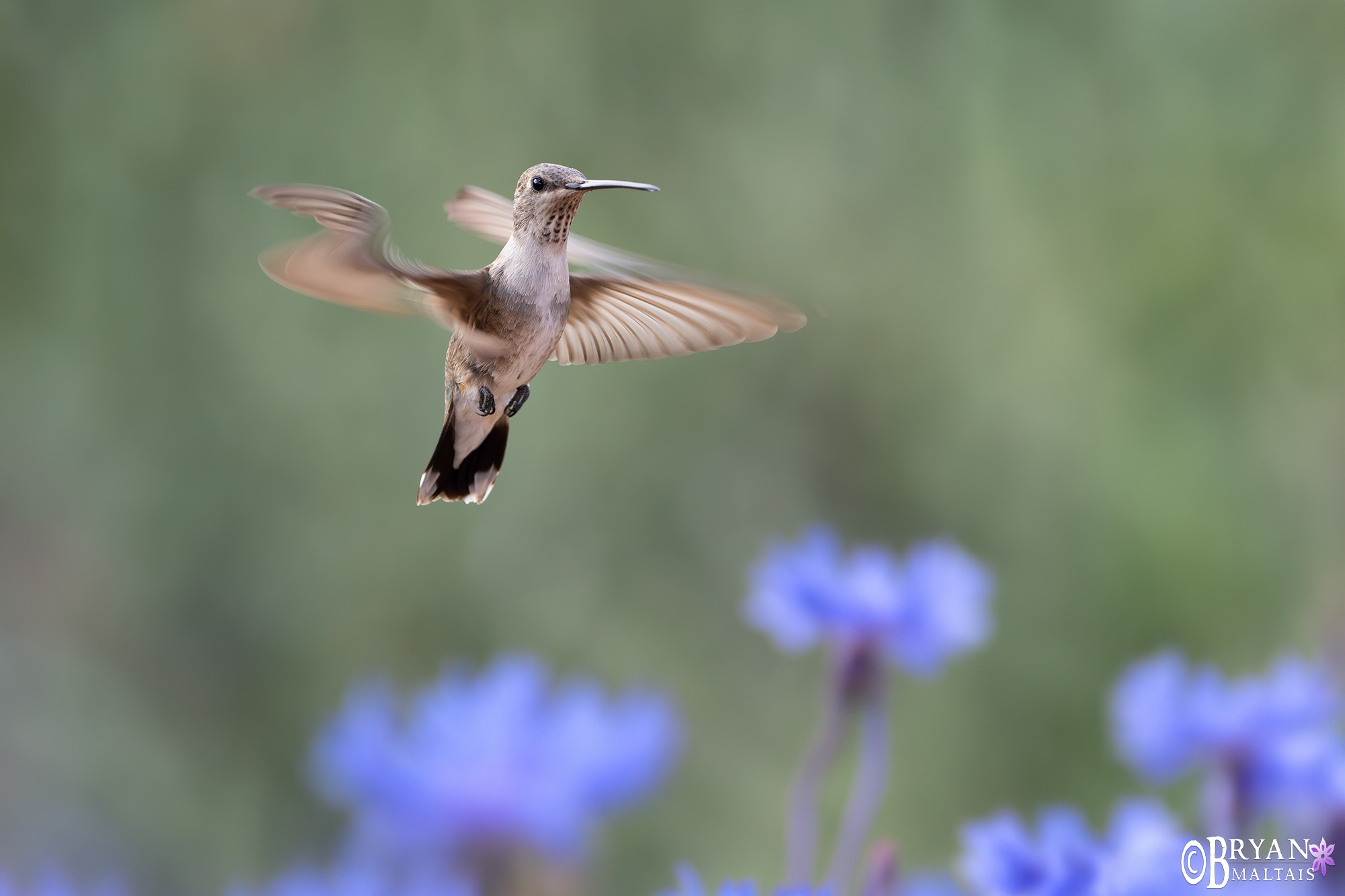
In Aug 2023 I made a trip to southeast Arizona to photograph the summer monsoons and rattlesnakes. This region is also a hot spot for hummingbirds and I was very excited to visit several hummingbird sanctuaries along my way. There are key characteristics that make SE Arizona prime hummingbird territory. Situated on the border, many birds must pass through Arizona on their northward migration. Some species stay there, attracted by its five overlapping habitats that offer environmental characteristic of both North and South America. Southeast Arizona is also blessed with the Sky Islands; mountains that sprout up from the Sonora desert. They act as resource-laden oases among the hot desert. Because it gets cooler with elevation, it rains more on the mountains. Lush woodland thrives on the mild mountain sides while baking desert sprawls below. In fact, this extreme climate difference creates a gradation of habitat niches from low to high elevations, causing more biodiversity in Arizona than the Everglades. The hummingbird sanctuaries themselves attract squadrons of birds because they offer an unlimited source of nectar. Hummingbirds also consume copious quantities of insects for protein.
Hummingbird Photography Settings and Technique
I don’t photograph hummingbirds often so I contemplated how I’d shoot them during my drive there. I wanted to capture nice portfolio images of sharp hummingbirds in flight with their eyes in focus, not just easy shots of birds sitting on feeders. This would require the bleeding edge of my camera’s capabilities, and the right technique. I shot with my Sony A7r V and 100-400mm G Master zoom lens. Hummingbirds are habituated to humans at sanctuaries so I could sit pretty close to them. I took most shots around 200mm. I used Manual mode coupled with Auto ISO. Low light limited me to using shutter speeds between 1/1000th and 1/1600 sec. I experimented with using electronic shutter, which captured images of crystalized hummingbird bodies with “rubberized” wings from the effects of rolling shutter.
The Sony A7r V’s “bird eye auto focus” came in handy for this assignment. When you position the focus point on the bird’s eye, it locks on and tracks it around the frame…in theory. While this has worked well for me on “normal” birds, it did not work on hummingbirds zipping around the frame except in a specific scenario. I had to wait for a hummingbird to fly into the frame, land on a feeder, then fly back into a hover to reposition itself elsewhere on the feeder. This allowed the camera to acquire focus on the eye when the bird was perched, and then tracked it when the bird moved into a hover. It was also able to lock focus when birds flew into the frame and hovered in place for a few seconds before landing, but they didn’t do this often. My drive mode was set to continuous high, and I let it rip whenever I acquired focus on a bird. This inevitably got me a few sharp photos in a stack of blurry ones.
In choosing where to aim my camera, I had to observe the hummingbirds’ flight patterns. Rather than trying to follow birds, I kept my camera aimed at a space up and to one side of a nectar feeder where there seemed to be high traffic, then began shooting when one entered the frame. An endless rotation of hummingbirds visited each feeder. Their flight was too fast and erratic to anticipate where they’d land. Often, a bird would appear to be on a predictable path, only to radically veer off course like a UFO. They were also highly aggressive, chasing and cutting each other off in mid flight. The extraordinary fun of photographing hummingbirds in a sanctuary will draw you into shooting for hours so I recommend supporting your rig with a tripod rather than trying to hand-hold it.
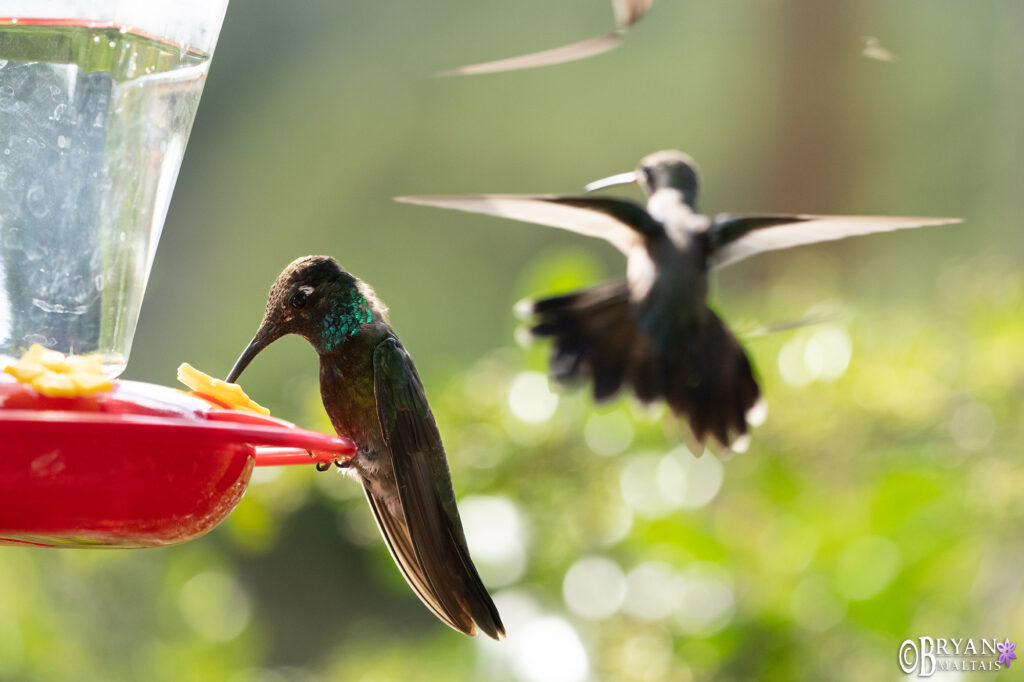 Rivoli’s Hummingbird is a large one about the size of a Finch.
Rivoli’s Hummingbird is a large one about the size of a Finch.
There were a few tricks required in post-processing to yield the best images. I cropped most of the images by 30-50%. If I had zoomed all the way in to the birds I would have missed shots because the field of view wouldn’t have been wide enough to acquire them as targets. Most of the original shots also contained a portion of the red, unnatural looking nectar feeder, which I cloned out in all the final images. 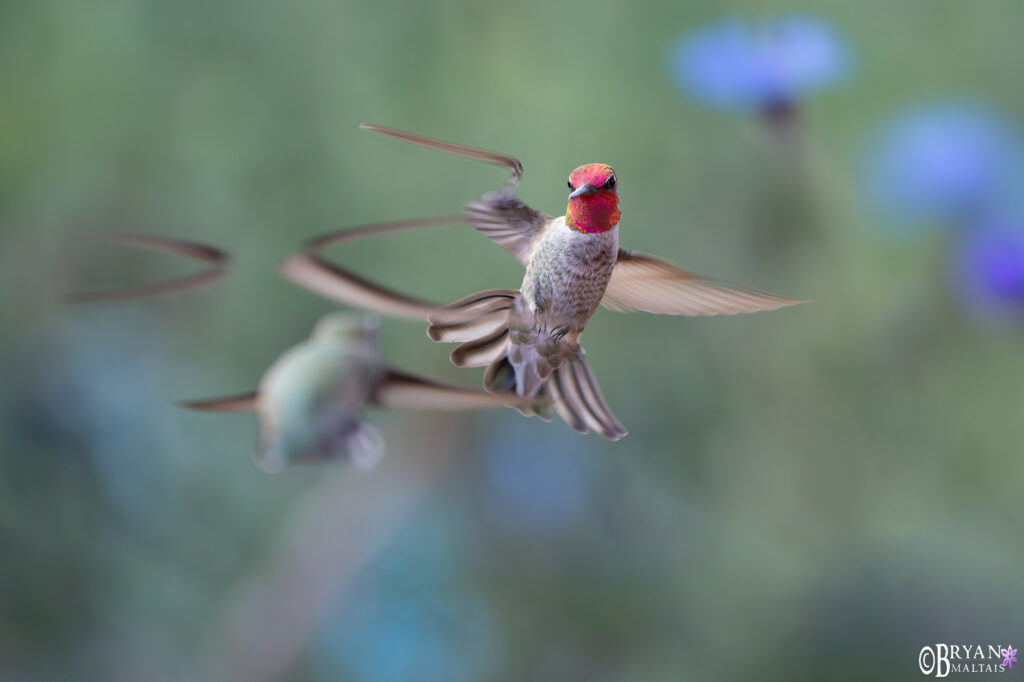 Male Anna’s Hummingbirds had the most spectacular head plumage.There was constant bickering over nectar feeders!
Male Anna’s Hummingbirds had the most spectacular head plumage.There was constant bickering over nectar feeders!
The Hummingbird Sanctuaries in Southeast Arizona
I visited the Ramsey Canyon Preserve and the Ash Canyon Bird Sanctuary in Sierra Vista, AZ. Then I stopped at the Santa Rita Lodge in Madera Canyon, AZ. I could only visit three hummingbird sanctuaries because I had other photography priorities. I would’ve planned in more had I known how fun and educational they were. Sierra Vista in particular is considered the hummingbird capital of America. Though isolated, it’s a bustling town at the foot of the beautiful Huachuca Mountains in the middle of the Sonora desert along the Mexico border.
Bridled Titmouse and Lesser Goldfinch were a few of many bird species besides hummingbirds observable at the Ash Canyon Bird Sanctuary
The Ramsey Canyon Preserve is an entire park with hiking trails winding through shaded Oak-Evergreen woodland. It has two nectar feeding stations along the trail. You also can encounter all sorts of herps, mammals and birds that are semi-habituated to humans. It was the perfect spot to take refuge from the hot desert during the day. The Ash Canyon Bird Sanctuary is just a small courtyard attached to a house that’s generously filled with feeding and watering stations. It’s at low elevation in the desert and is often chocked full of birders. Despite these seemingly stuffy conditions, it offered the highest diversity of easy to see hummingbirds and other animals that were attracted to so much food concentrated in one spot. It was easy to capture a variety of close-up shots, some with flowers in the background. Lastly, the Santa Rita Lodge is located in the woodlands of Madera Canyon and has many nectar feeders as well as bird feeding stations.
I did my best to compile a complete list of hummingbird sanctuaries in southeast Arizona, but if I missed any please let me know in the comments.
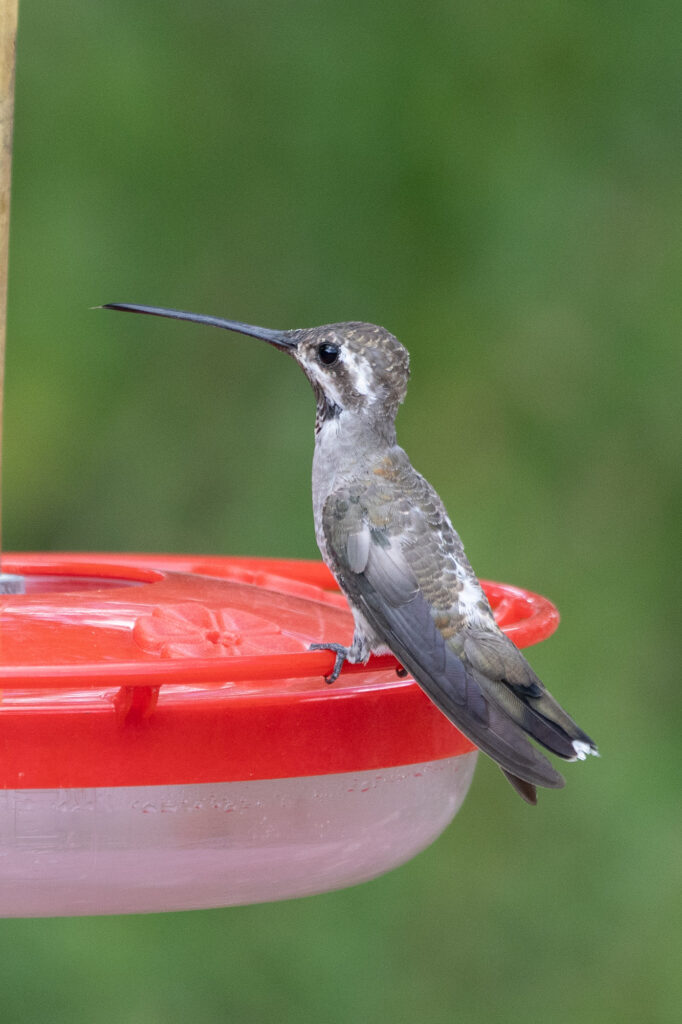 The Plain-capped Starthroat is a rare visitor north of the border and was the sensation of Ash Canyon the day I was there. This single individual visited the same feeder about once an hour and caused an uproar whenever he arrived. Everybody dropped what they were doing and all lenses and eyes were on him. Not being a serious birder, I didn’t realize what I was looking at initially.
The Plain-capped Starthroat is a rare visitor north of the border and was the sensation of Ash Canyon the day I was there. This single individual visited the same feeder about once an hour and caused an uproar whenever he arrived. Everybody dropped what they were doing and all lenses and eyes were on him. Not being a serious birder, I didn’t realize what I was looking at initially.
1. Violet-crowned Hummingbird in nest, 2. Rufous Hummingbird territoriality, 3. The Broad-billed Hummingbird. The wings are in two places at once because even during a 1/1000 sec exposure time, the wings slow down just enough at their forward and rear positions to be captured in both places, 4. Rufous Hummingbird
Hummingbirds “Point” at predatory Mantis
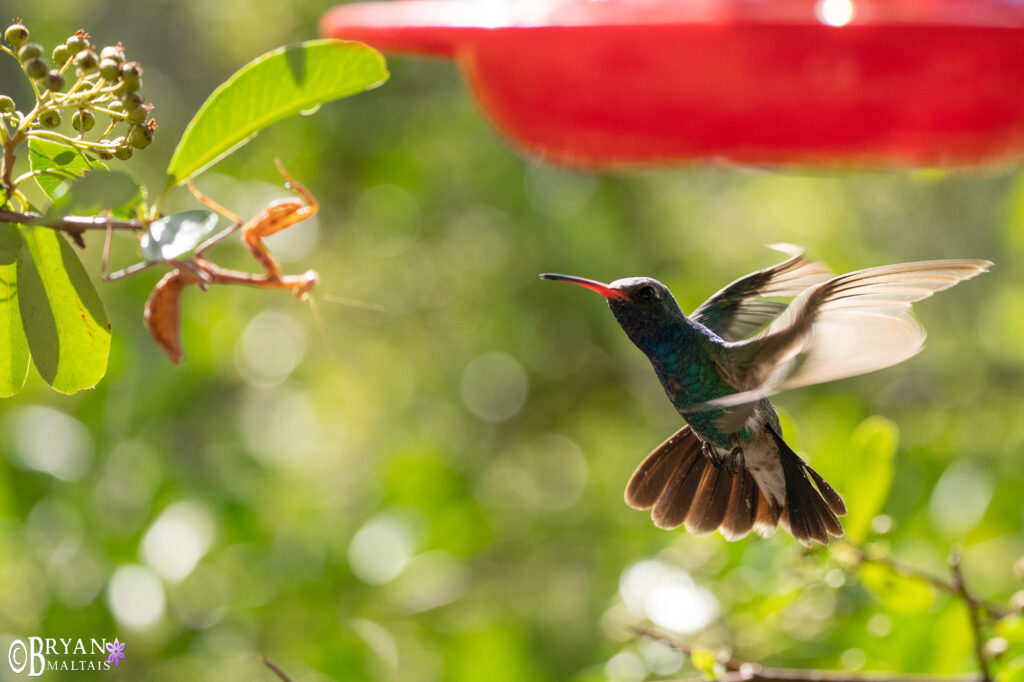 At the Santa Rita Lodge I didn’t realize what I was capturing in the moment. Several hummingbirds kept hovering in one particular spot looking at something, but they weren’t approaching a flower or feeder. When I reviewed the images in camera I saw that they detected a praying mantis hanging dangerously close to the feeder and were actually pointing it out to the others. This was a small mantis that probably couldn’t have taken a hummingbird, but adults certainly can. In either case, the mantis’ instincts brought him to the feeder, which put the hummingbirds on high alert. This was an interesting display of intelligence and apparent altruism that I’m not sure has been documented in photos.
At the Santa Rita Lodge I didn’t realize what I was capturing in the moment. Several hummingbirds kept hovering in one particular spot looking at something, but they weren’t approaching a flower or feeder. When I reviewed the images in camera I saw that they detected a praying mantis hanging dangerously close to the feeder and were actually pointing it out to the others. This was a small mantis that probably couldn’t have taken a hummingbird, but adults certainly can. In either case, the mantis’ instincts brought him to the feeder, which put the hummingbirds on high alert. This was an interesting display of intelligence and apparent altruism that I’m not sure has been documented in photos.
- Matis

